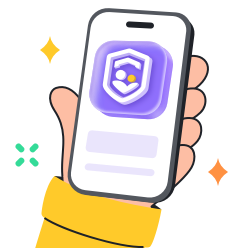In this digital era, almost every mobile user, including kids, uses hand signs to express emotions or even to say hello to their fellows. Some signs are harmless, but certain ones are quite dangerous for kids because they have different meanings in different cultures.
In this guide, we’ll discuss the most popular hand signs and their real meanings. Moreover, we’ll also highlight the risks children encounter and how to protect them smartly. So, keep reading!
Common hand signs and their meanings
Using hand signs is a fun and straightforward way to express feelings and ideas without words. Such gestures aid communication, enable you to convey some form of emotion, and engage with people. It is especially when the environment is too noisy or during periods of silence. Let’s discuss some important hand signs and their explanations.
Thumbs Up
This sign shows that you appreciate what was done, or that something good was done. To perform this sign, you raise your thumb while the rest of your fingers stay down. For example:



- If a friend of yours shows a drawing that you think is amazing, then you’ll respond with a 👍 thumbs-up. It’ll convey that you believe it was “Good Job”.
- The sign can equally be used to show agreement. Like how a teacher asks, “Is everyone ready?” Your response can be given with your thumb raised 👍, meaning, “Yes, I’m ready.”
Thumbs Down
This is the opposite of thumbs up. It signifies you don’t like something, or it was poorly done. For instance, you can try it when.
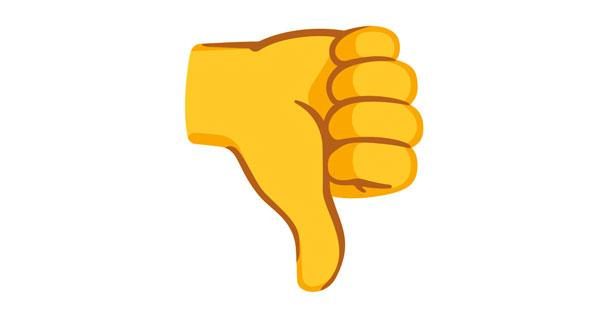


- A game you love keeps freezing.
- You try a new candy, and it tastes really bad.
- Imagine looking forward to a pizza. Now, finding out there is none, thus thumbs down👎 expresses disappointment. It’s a shortcut to indicate something is amiss or needs attention.
Peace Sign
Peace, rest, calmness, and even farewell can all be suggested with this ✌️ sign. You often made this sign with the index and middle fingers raised in a “V” position. Many use it to appear cool or relaxed in photographs.
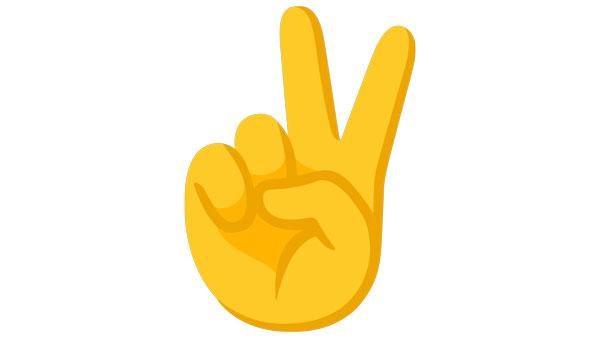


Also, when parting from a friend’s house, you can say goodbye cheerfully by smiling and flashing the peace sign. It makes parting sweeter.
Waving Hand
To greet someone or bid them farewell, a wave can be both friendly and sociable. With an up and down hand motion, one can say both “hello” and “goodbye.” For example:
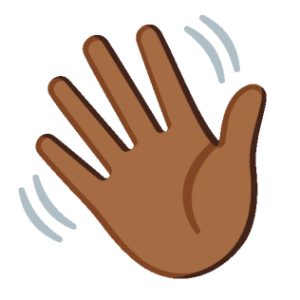


- As students enter class in the morning, a wave to the teacher 👋 is very joyful.
- On the way home, saying “Bye!” with a wave 👋 is also very cheerful.
Call Me Sign
You can bend your pinky and thumb to form a pretend phone near your face or joke with friends. For instance, you can use it when.
- You want to tell someone to “let’s keep in touch.”
- You are pretending to talk on the phone.
- You wish a friend would call you later, or you would like to talk with them at a later time.
Fingers Crossed
When hoping for the best, you can cross your index and middle fingers of your hands. It is one of the oldest gestures known for saying Good luck.



“Fingers crossed 🤞 you win the race” is quite casual and comes as a phrase supporting your wish.
High Five
A high five is a universal hand gesture symbolizing victory. Like any other form of celebration, it comes with a sense of triumph. For example:
- When celebrating your friend’s academic achievement,
- Or general recognition of goal-oriented efforts.
- A high five elevates happiness and pride while enhancing overall positive mood.
Love Sign
This sign is made by lifting your thumb, index finger, and pinky while all other fingers are down. This is a love sign in language and captures a nice gesture of carefree. For instance, this sign would be appropriate in the following situations:
- Bidding farewell to someone holds significance in your life.
- Demonstrating affection toward family members or even furry companions.
- In consideration, accompany a photo or a greeting card.
Ok Sign
The thumb and index finger making a circle with the rest of the hand open, creates the gesture known as ‘okay’ or ‘perfect.’ You can utilize the signs when:
- Receiving a call, “Is everything okay?”
- While browsing the internet, a friend surprises you: “Check this out!”
Clapping Hands
“Great job!” and “I’m proud of you!” are best signified with “Clapping Hands”. Also, you may clap when:
- A person emerges victorious in a race.
- Your friend takes the stage and performs.
Now that you know these signs and their meanings, you can use them to help yourself express your feelings in a simple yet meaningful way.
Monitor your child’s hand sign activities safely, ensuring a secure learning environment.
Cultural variations in hand signs
Although hand gestures are entertaining and engaging to utilize, they also require consideration of cultural diversity. What you might regard as friendly may be considered unfriendly in another country. This is a clear illustration of why the knowledge of different cultures is important.
Let’s look at several examples of hand gestures and observe what meaning they connote in various cultures!
Example 1:
Take the action of swiping one’s fingers under the chin and then flicking them forward 🖐️ (Swipe of the Chin). In Italy, people use it to show they don’t care.
However, in Belgium and France, this same gesture represents an unfriendly dismissal. Thus, with a slight hand gesture, one can be courteous in some parts but offensive in others.
Example 2:
Now, let us consider thumbs up 👍. As stated earlier, it is used as a signal for approval, “yes,” “great,” “good,” and so on. It is a positive and happy sign in America and Pakistan.
However, in some regions like Iran and parts of Greece, it’s not appreciated. There, thumbs up is traditionally viewed as rude and disrespectful.
Example 3:
Also, the V-shaped sign ✌️ made by hand has different meanings in different cultures. Generally, it is known as a peace sign.
However, in the UK and Australia, palm inward becomes an offensive sign. Simply turning your wrist makes a world of difference to the meaning!
Example 4:
The action of putting hands together within the chest area 🙏 seems like one is praying. In India, this is Namaste, which shows a respectful greeting and compassion.
In Western countries, people would interpret it as a way of invoking the divine for assistance. Thus, greetings in one context turn to hopes and prayers in another.
Example 5:
Waving 👋 is one of the easiest greetings as well as a farewell. In the US, Canada, and even Pakistan, it is customary to wave as a way of greeting someone or saying goodbye.
However, in Greece, waving with fingers spread and palm facing outward is rude or insulting.
As explained, one action can have different reactions depending on location. The reason for most of these cultural clashes concerning the use of hand signs and gestures is a lack of knowledge. Embracing such differences shows kindness and helps build good relations even without words.
Why do kids like hand gestures, and are they safe for kids?
Children often use gestures long before they learn to articulate words. In fact, while playing or filming, hand signs often serve to express emotions. As time goes by, the practice of using hand signs continues to develop due to newer social media trends.
In this case, let me explain why these signs are so appealing to children.
What motivates kids to use hand signs?
- Instant emotion recognition and learning:
Symbols assist children in conveying feelings and learning with the least effort. They do not have to spell out lengthy words to talk. For example, waving 👋 to greet, thumbs up 👎 for approval, and crossing fingers 🤞 to wish someone luck are more convenient than explaining in words.
- Enhancing photos and videos:
Moreover, using hand emojis, kids can also make their photos and videos more eye-catching on social media platforms. It is a form of creativity that does not demand words or filters.
- Keeping up with the times:
Also, hand signs come along with viral trends. As a result, kids are more likely to encounter hand signs and imitate them. Joining in challenges makes them feel temporally relevant and socially integrated.
What should parents watch for?
Children can convey messages through signs that appear harmless, but those signs can constitute something entirely different in different settings. Some messages can lead to unnecessary focused attention when shared online. Let’s have a closer look at the risks associated with the use of such emojis!
- Misunderstood meanings:
Perhaps hand signs and memes give hints of being harmless. However, in reality, they harbor deeper meanings that differ from context to context. Some of them could, in fact, elicit the wrong type of attention if posted online.
- Online bullying:
Children post short clips bearing hand signs, which, for some reason, happen to be very popular. However, such clips can invite a lot of negative attention, which spreads like wildfire, turning into some form of bullying.
- Receiving attention from strangers:
Moreover, using emojis or suggestive hand gestures is seen as flirting by strangers. Therefore, strangers would commence to text and mock your children.
How to protect kids from harmful hand gestures?
In contemporary society, hand gestures have become a common practice. However, as we discussed earlier, some gestures that come from TikTok or WhatsApp could be dangerous or disrespectful to children. Because of this, these children are likely to mimic those gestures without knowing what they mean.
Tracking harmful content in digital communication
The younger generation appears to be more interested in mobile devices. Therefore, it is more likely that they send or receive suggestive or rude emojis without knowing. So, you as parents should always make sure to protect them from cyberbullying by monitoring their activities.
In this situation, I suggest applying parental control software. Most such software does not guarantee 100% accuracy or reliability. Nevertheless, FlashGet Kids is the most favorite one among parents due to its real-time tracking feature of children’s digital whereabouts with instant notifications. For instance,
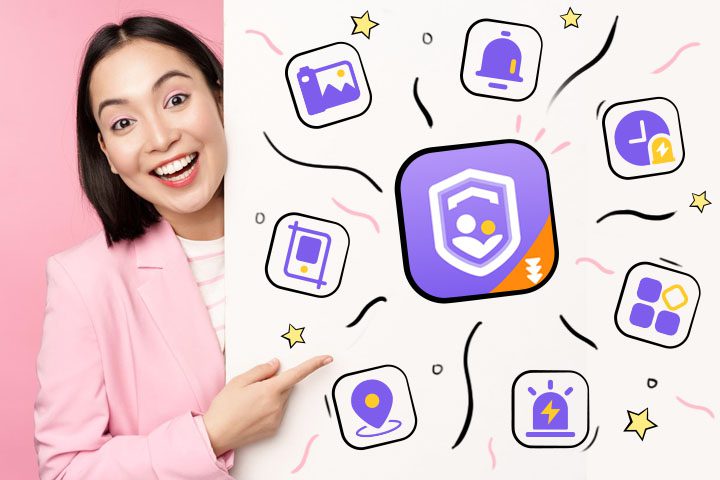


- Social detection: Due to the keyword detection feature, you can set inappropriate words or even emojis. Thus, if kids partake in flirty conversations, the app will notify you without delay.
- Album safety: Moreover, you can supervise photo galleries. The application filters photos and notifies parents of children’s pictures that display inappropriate behavior. This way, parents are well aware if their children are unintentionally snapping pictures of harmful gestures.
Setting boundaries on social media platforms
Social media platforms are the epicenter of virulent trends that can have an adverse effect on young people. Young people might engage in ‘raise your hand’, an emoji-based challenge that prompts them to display offensive hand movements. This is one of the areas where it’s reasonable to consider setting limits for your children.
With FlashGet Kids, it’s possible to both block the usage of specific mobile applications and set time limits on their use. For example, if you notice that Snapchat or TikTok poses unwarranted risks to your children, you can program screen time settings to allow access for only a set number of hours.
Conclusion
From the above discussion, we have concluded that hand signs are a fun and easy way to express feelings and thoughts without speaking. However, be mindful that hand gestures also have cultural variations, which can cause confusion.
When it comes to kids, you have to be extra careful. Kids may use such emojis just to follow the trend without knowing their meanings. It may expose them to potential online dangers. That’s why the FlashGet Kids parental control app proves particularly beneficial in controlling kids’ digital activities by sending you real-time alerts.

